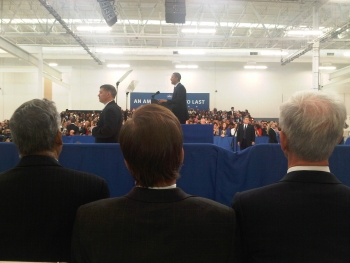Guest blog post by John Bryson, U.S. Secretary of Commerce
Today’s
employment numbers are yet another indication that our economy is moving in the
right direction. The unemployment rate dropped to 8.3 percent and 243,000 jobs
were added in January, making this the 23rd consecutive month of job growth.
Private sector job growth has been driving the decrease in unemployment, with
the private sector adding 257,000 jobs last month. The manufacturing sector
alone grew by 50,000 jobs in January, showing that manufacturing is still an
important and growing part of the American economy. In the last two years,
manufacturing added 330,000 jobs in the U.S. – the strongest growth since the
1990s. And today, we learned that new orders for manufactured goods rose 1.1
percent in December 2011.
Despite
this, our work remains far from over. We need faster economic growth to put
Americans back to work and we won’t let up until everyone who wants a job can
find a job. We must redouble our efforts to create an economy that is built to
last.
So
what does that mean? I can tell you first hand. Over the past 10
days, I’ve traveled to Norfolk, Columbus and Pittsburgh to talk with businesses
that are on the front lines of strengthening the elements of an economy built
to last: American manufacturing, American energy, and training for American
workers.
I’ve
talked with manufacturers who are making everything from mattresses to advanced
batteries. My message to them is a simple one: This Administration – this
Department – wants to help more businesses like yours build it here and sell it
everywhere.
We
can and must build on the momentum the economy has gained in four key ways.









